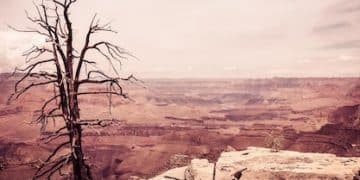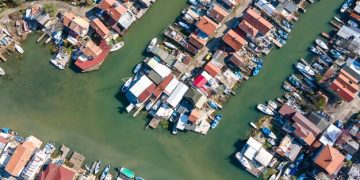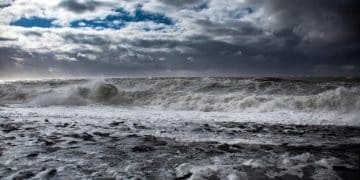Wildfires & Home Insurance: US Rates by 2025 Impact
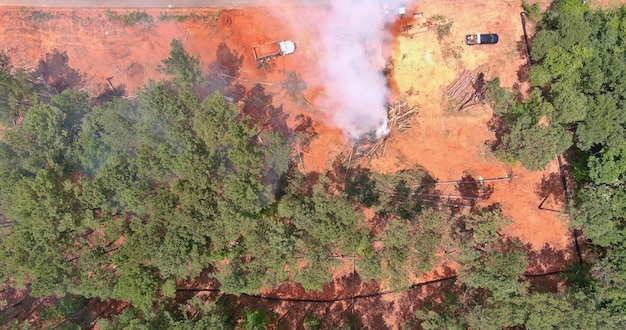
The escalating frequency and intensity of wildfires across the US are poised to significantly reshape home insurance rates by 2025, driven by increased property damage, higher catastrophic losses for insurers, and complex modeling adjustments reflecting heightened risk in vulnerable regions.
The increasing frequency of wildfires poses a pressing question for homeowners across the United States: How will increased wildfire frequency impact home insurance rates across the US by 2025? As climate patterns shift and human development encroaches on wildland-urban interfaces, the risk of devastating fires continues to escalate, directly threatening property values and, consequently, the stability and affordability of home insurance policies. This developing crisis demands a comprehensive understanding of the multifaceted factors at play, from ecological changes to actuarial science.
The Escalating Threat of Wildfires Across the US
The United States has witnessed a startling increase in both the frequency and severity of wildfires over the past two decades. This trend is not confined to traditionally fire-prone states like California; rather, it is expanding into new regions, altering the landscape of risk for millions of homeowners. Understanding the core drivers behind this escalation provides critical context for assessing its impact on the insurance sector.
Climatic factors play a predominant role. Prolonged droughts, higher average temperatures, and earlier spring thaws contribute to drier vegetation, turning vast swathes of land into highly flammable tinderboxes. The absence of adequate moisture, intensified by climate change, means that when ignition occurs, fires spread more rapidly and intensely.
Geographic Spread and Intensity
While Western states, particularly California, Oregon, and Washington, remain hotspots, wildfire activity is now a significant concern in unexpected areas. States like Colorado, Texas, and even parts of the Southeast are experiencing more frequent and destructive blazes. This geographic expansion means that a broader segment of the US housing market is now exposed to this evolving peril, fundamentally altering regional risk profiles.
- 🔥 **Western States:** Continued and intensifying large-scale fires.
- 🌲 **Mountain West:** Increased frequency and severity due to drought and forest health.
- 🌵 **Southwest:** Extended fire seasons and larger burnt areas.
- 🌿 **Southeastern US:** Growing risk from prescribed burns gone awry and dry conditions.
Beyond climate, human factors are equally pivotal. Expanding urban and suburban developments into wildland-urban interface (WUI) zones places more homes directly in harm’s way. This proximity amplifies the potential for property damage and necessitates costlier, more complex firefighting efforts. Furthermore, a substantial percentage of wildfires are ignited by human activity, whether accidentally or intentionally, adding another layer of preventable risk.
The accumulated fuel load in many forests, resulting from a century of fire suppression policies, also contributes to catastrophic fire behavior. Instead of numerous smaller fires that clear underbrush, we now see less frequent but far more destructive megafires that consume vast areas, making mitigation and suppression increasingly challenging. This complex interplay of environmental and anthropogenic factors is setting the stage for significant shifts in how risk is assessed and priced by the home insurance industry.
Understanding Home Insurance Premiums and Wildfire Risk
Home insurance premiums are a direct reflection of perceived risk. Insurers meticulously assess a multitude of factors to determine how likely a property is to suffer damage and how costly that damage might be. As wildfire frequency intensifies, the actuarial science behind these calculations becomes increasingly complex and, for many homeowners, significantly more expensive.
At its core, a premium represents the insurer’s best estimate of future losses, administrative costs, and a reasonable profit margin. When the likelihood of loss from a specific peril, such as wildfire, increases, so too must the price of insuring against it. This is a fundamental principle of insurance: spreading risk across a pool of policyholders, but adjusting individual contributions based on their unique risk exposure.
Key Factors Influencing Premiums
Several variables are central to how insurers price wildfire risk. The proximity of a home to known wildfire zones, the type of construction materials used (e.g., fire-resistant roofing), the surrounding vegetation, and even local topography all play a role. Insurers leverage sophisticated mapping and modeling tools to pinpoint high-risk areas, assigning higher premiums to properties within these zones.
- 🏡 **Property Location:** Proximity to WUI, historical fire perimeters, and vegetation density.
- 🏗️ **Construction Materials:** Non-combustible siding, highly rated roofing materials.
- 🌳 **Defensible Space:** The buffer zone created around a home to resist wildfire spread.
- 📈 **Historical Claims Data:** Past losses in the region directly influence future pricing.
Increased wildfire frequency translates directly into higher claims payouts for insurers. When catastrophic events occur, these payouts can strain insurers’ financial reserves, prompting them to seek rate increases across their entire portfolios, not just in the most affected areas. Regulators typically scrutinize these requests, but a clear trend of rising losses provides strong justification for higher premiums.
Furthermore, the cost of reinsurance—insurance for insurers—is also rising in response to global climate risks, including wildfires. This added cost is then passed down to primary insurers and, subsequently, to policyholders. The interconnectedness of these financial layers means that what happens in one wildfire season can have ripple effects for years to come on individual home insurance policies.
Projected Impact on Home Insurance Rates by 2025
By 2025, the trajectory of escalating wildfire frequency is expected to exert substantial upward pressure on home insurance rates across affected regions of the US. This will manifest not just as incremental increases but potentially as significant adjustments for homes deemed high-risk. Several interconnected factors will drive these changes, fundamentally altering the economics of homeownership in vulnerable areas.
Firstly, the direct cost of claims will continue to surge. As more homes are damaged or destroyed, insurers face larger aggregate payouts. These costs are eventually recouped through higher premiums from the entire pool of policyholders. Furthermore, the cost of rebuilding is rising due to inflation in materials and labor, exacerbating the financial burden on insurers and, by extension, homeowners.
Regional Rate Divergence
While a nationwide trend of rising rates is anticipated, the impact will be highly localized. States and counties with the most significant wildfire activity will experience the sharpest increases. This could lead to a widening gap in insurance affordability between high-risk and low-risk areas, potentially influencing property values and real estate markets.

- ⬆️ **Significant Increases:** California, Colorado, Oregon, Washington, parts of Texas and Arizona.
- ↔️ **Moderate Increases:** States adjacent to high-risk zones, experiencing spillover effects.
- ⬇️ **Minimal Impact:** Regions traditionally unaffected by wildfires, though this could change.
Insurers are also becoming more sophisticated in their risk modeling. They are leveraging advanced geospatial data, artificial intelligence, and predictive analytics to assess individual property risk with unprecedented precision. This means that homes previously considered low-to-moderate risk might be reclassified, leading to unexpected premium hikes for their owners. By 2025, it is plausible that some insurers will withdraw from certain high-risk markets entirely, limiting options for homeowners and potentially creating insurance “deserts.”
Moreover, regulatory responses will play a crucial role. State insurance departments face the challenging task of balancing insurer solvency with consumer affordability. Some states may implement caps on rate increases or explore alternative insurance mechanisms, but the underlying economic realities of risk accumulation will remain. Homeowners should anticipate continued pressure on rates and a heightened emphasis from insurers on mitigation efforts as a precondition for coverage or favorable pricing.
Mitigation Strategies and Their Influence on Premiums
In the face of rising wildfire risk and escalating insurance premiums, proactive mitigation strategies are becoming increasingly vital for homeowners. Insurers are not only raising rates but also incentivizing, and sometimes mandating, specific measures that can significantly reduce a property’s vulnerability to wildfire. By 2025, the adoption of these strategies will likely have a more direct and tangible impact on individual insurance premiums.
The concept of “defensible space” is paramount. This involves creating a buffer zone around the home by clearing flammable vegetation, reducing fuel loads, and maintaining landscaping that resists fire spread. The specific recommendations vary based on local conditions, but generally involve managing vegetation for a distance of at least 30 to 100 feet from the structure.
Building Materials and Home Hardening
Beyond landscaping, the materials and design of a home itself are critical. Fire-resistant roofing (e.g., metal, tile, or composition shingles with a Class A fire rating), non-combustible siding (e.g., stucco, fiber cement, metal), and dual-pane tempered glass windows can dramatically improve a home’s chances of surviving a wildfire. Additionally, protecting vents, enclosing eaves, and maintaining gutters free of debris are crucial preventative steps.
- 🏡 **Defensible Space:** Removing dead vegetation, trimming low-hanging branches, maintaining proper spacing between plants.
- 🔥 **Fire-Resistant Building Materials:** Opting for Class A rated roofs, non-combustible siding, and tempered windows.
- 💧 **Water Access:** Ensuring available water sources and fire-hose accessibility for responders.
- 🛠️ **Maintenance:** Regular clearing of gutters, sealing entry points for embers, and chimney upkeep.
Insurers are increasingly offering discounts or preferential rates to homeowners who implement these hardening measures. Some may even require certain mitigation efforts for coverage in high-risk areas. As risk modeling becomes more granular, these individual property-level efforts will be more accurately reflected in pricing, creating a direct financial incentive for homeowners to invest in safety.
Community-level mitigation efforts also play a role. Programs like Firewise USA®, which encourage community-wide risk reduction, can contribute to lower overall community risk profiles, which may indirectly influence insurance costs. Collaborative efforts between homeowners, local governments, and fire agencies to manage forests and create fire breaks can reduce the likelihood of large-scale, destructive fires, benefiting both residents and insurers in the long run.
Challenges for Insurers and Homeowners
The rising frequency of wildfires presents a complex array of challenges for both the insurance industry and individual homeowners across the US. Insurers grapple with unprecedented financial losses and the difficulty of accurately pricing escalating risk, while homeowners face potentially unaffordable premiums and limited coverage options.
For insurers, the primary challenge is financial solvency. Catastrophic wildfire seasons can strain reserves, leading to significant underwriting losses. This pressure is compounded by the inability to accurately predict the scale and location of future megafires, making traditional actuarial models less reliable. The rising cost of reinsurance, which insurers purchase to protect themselves from large losses, further exacerbates their financial burden, which is then passed on to consumers.
Availability and Affordability of Coverage
As losses mount, some insurers are withdrawing from high-risk markets or significantly reducing their exposure. This trend, already evident in states like California, leaves homeowners with fewer options, often forcing them into high-cost state “insurers of last resort” or non-admitted markets with less regulatory oversight. This dwindling availability pushes up prices for the remaining options and can make mortgages difficult to obtain in fire-prone areas.
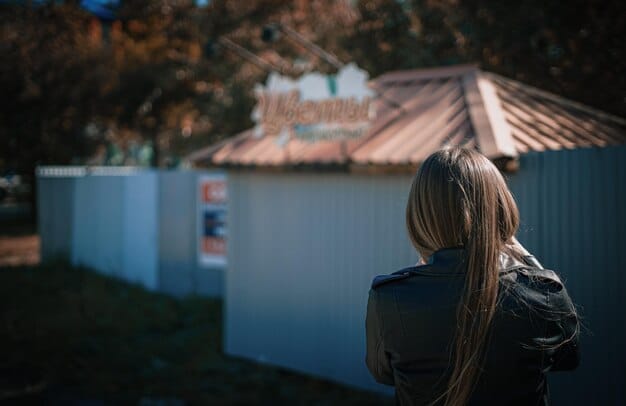
- 💰 **Soaring Premiums:** Direct impact on household budgets.
- 📉 **Coverage Reduction:** Fewer insurers, less comprehensive policies.
- 🚫 **Policy Non-Renewals:** Insurers opting out of high-risk areas.
- 🤔 **Mortgage Implications:** Difficulty securing loans without adequate insurance.
Homeowners, particularly those in WUI zones, face the stark reality of increasingly unaffordable insurance alongside the existential threat of wildfire. Even with mitigation efforts, premiums can remain prohibitively high. The decision to invest in home hardening measures, while beneficial, represents an additional upfront cost that not all homeowners can afford, creating an inequitable playing field for risk reduction.
Furthermore, the psychological toll of living under constant wildfire threat, coupled with financial anxiety about insurance, is considerable. The imperative for adaptive strategies from both sides is clear: insurers must innovate pricing models and risk management, while homeowners require greater support and resources to implement effective mitigation techniques, ensuring that homeownership remains sustainable and secure in a changing climate.
The Role of Government and Policy in Managing Wildfire Risk
Government bodies and policy initiatives play a critical, multifaceted role in addressing the escalating wildfire crisis and its impact on home insurance rates. From land management to regulatory oversight, effective governance is essential to mitigate harm, foster resilience, and ensure the continued availability of affordable property coverage.
At the federal level, agencies like the US Forest Service and Bureau of Land Management are tasked with managing vast tracts of public lands, including efforts to reduce fuel loads through prescribed burns and mechanical thinning. These proactive measures are crucial in preventing catastrophic fires from igniting and spreading, thereby reducing overall risk to adjacent communities and, by extension, insurance exposure. Funding for these initiatives is a constant point of contention but remains vital.
State-Level Regulations and Programs
State governments hold significant sway over insurance markets. State insurance departments regulate rates and often have the power to approve or reject proposed premium increases. They also oversee “insurers of last resort,” such as California’s FAIR Plan, which provide basic coverage when private insurers withdraw. These plans are critical safety nets but often come with higher costs and more limited coverage, reflecting the elevated risk they absorb.
- 📜 **Rate Regulation:** State insurance departments balancing insurer solvency and consumer affordability.
- 🌳 **Land Use Planning:** Zoning laws, building codes, and WUI development regulations.
- 🔥 **Community Programs:** Funding for Firewise USA® and other local mitigation efforts.
- 📉 **Incentive Programs:** Tax breaks or grants for home hardening and defensible space.
Many states are also implementing policies that mandate or incentivize wildfire mitigation at the property and community level. This includes updated building codes requiring fire-resistant materials in new construction, and grants or rebates for homeowners to retrofit existing homes. Some legislatures are exploring linking insurance discounts directly to verifiable mitigation efforts, creating a more direct financial pathway for risk reduction.
Beyond insurance, government investment in early detection systems, improved firefighting capabilities, and public awareness campaigns are all part of a comprehensive strategy. The goal is to shift from reactive firefighting to proactive fire prevention and resilience building. As wildfire frequency continues to rise by 2025, policymakers will face increasing pressure to develop robust, long-term solutions that protect both communities and the fundamental stability of the home insurance market.
Future Outlook and Adaptations for Homeowners
Looking towards 2025 and beyond, the future outlook for home insurance in wildfire-prone regions of the US necessitates significant adaptation from both insurers and homeowners. The current trajectory suggests continued challenges, but also burgeoning opportunities for innovative solutions and greater collective resilience. For homeowners, understanding these shifts and taking proactive steps will be paramount.
Insurers are likely to continue refining their risk assessment models, integrating more granular data, and potentially offering new types of policies tailored to specific wildfire exposures. This could involve more widespread parametric insurance, which pays out based on a trigger event (e.g., fire reaching a certain proximity) rather than actual damage, or policies that more heavily discount home hardening. The industry will also push for increased governmental support in broad mitigation efforts and infrastructure improvements.
Preparing for the “New Normal”
For homeowners, the concept of “wildfire season” is evolving into a year-round reality in many areas. Preparing for this “new normal” means integrating wildfire readiness into ongoing home maintenance and financial planning. This includes regularly assessing and maintaining defensible space, reviewing insurance policies annually for adequacy, and exploring all available mitigation incentives.
- 🔄 **Policy Review:** Annual assessment of coverage, deductibles, and exclusions.
- 💰 **Financial Planning:** Budgeting for potential premium increases or mitigation investments.
- 🏡 **Continuous Mitigation:** Regular maintenance of defensible space and home hardening.
- 📢 **Community Engagement:** Participating in local Firewise initiatives and advocacy.
The real estate market in wildfire-prone regions may also begin to reflect these insurance realities more acutely by 2025. Properties with strong wildfire-resistant features or those in communities actively engaged in mitigation may command a premium, while uninsured or high-risk homes could see depressed values. Awareness of a home’s “wildfire insurance score” might become as common as its energy efficiency rating.
Ultimately, the burden of adaptation will be shared. Insurers must find sustainable ways to offer coverage, and homeowners must embrace a proactive stance toward risk management. Government policies will need to facilitate both, bridging gaps in affordability and promoting community-wide resilience. By 2025, successful adaptation will depend on a multi-pronged approach that combines individual responsibility, industry innovation, and supportive public policy to navigate the evolving landscape of wildfire risk.
| Key Point | Brief Description |
|---|---|
| 🔥 Wildfire Frequency | Increased occurrences and intensity due to climate change and human factors. |
| 📈 Insurance Premiums | Expected to rise significantly by 2025, especially in high-risk zones, due to higher claims and reinsurance costs. |
| 🛡️ Mitigation Actions | Home hardening and defensible space are crucial; may lead to discounts or required for coverage. |
| 🤝 Policy & Gov Role | Government initiatives and regulation vital for land management, community resilience, and insurance market stability. |
Frequently Asked Questions About Wildfire Impact on Home Insurance
▼
Insurance operates on a principle of shared risk. When overall claims for a peril like wildfires increase significantly across a region or even nationally, insurers must raise premiums for all policyholders to cover those higher payouts and maintain their financial stability. Your location within a broader risk zone, even if not directly impacted, still contributes to the collective risk pool that is experiencing heightened losses.
▼
Defensible space is a zone around your home where combustible vegetation and materials are managed to slow a wildfire’s spread and protect your property. This typically involves clearing brush, pruning trees, and removing flammable items within varying distances. Many insurers offer discounts or require defensible space maintenance, as it significantly reduces your home’s vulnerability and their potential payout for damage.
▼
Yes, this is a distinct possibility and, in some cases, is already occurring. As wildfire risks escalate and become fiscally unsustainable, some private insurers might reduce their exposure or completely withdraw from specific high-risk regions. This can force homeowners into state-mandated FAIR Plans or specialized, more expensive non-admitted markets, making traditional home insurance harder to find and much costlier for those properties.
▼
Yes, various government programs exist at federal, state, and local levels. These can include grants for home hardening, tax incentives for fire-resistant landscaping, or community-based initiatives like the Firewise USA® program that helps neighborhoods reduce risk. It’s advisable to check with your state’s forestry department, local fire agencies, or insurance commissioner’s office for specific programs available in your area.
▼
Climate change contributes to increased wildfire frequency by extending drought periods, raising global temperatures, and altering precipitation patterns, leading to drier vegetation and longer fire seasons. These conditions create more opportunities for fires to ignite and spread rapidly. Insurers integrate these climate-driven risk increases into their models, directly causing higher premiums to account for the heightened likelihood of catastrophic losses.
Conclusion
The accelerating frequency and intensity of wildfires across the US present an undeniable and urgent challenge to the home insurance market. By 2025, homeowners should anticipate significant adjustments to their premiums, particularly in regions most susceptible to these natural disasters. While these shifts reflect the escalating financial burden on the insurance industry, they also underscore the critical need for proactive mitigation and adaptive strategies. The future of home insurance in wildfire-prone areas will hinge on a collective commitment to risk reduction—from individual property hardening and community-level initiatives to innovative insurance models and supportive government policies—ensuring that homeownership remains both secure and affordable in a changing climate.

